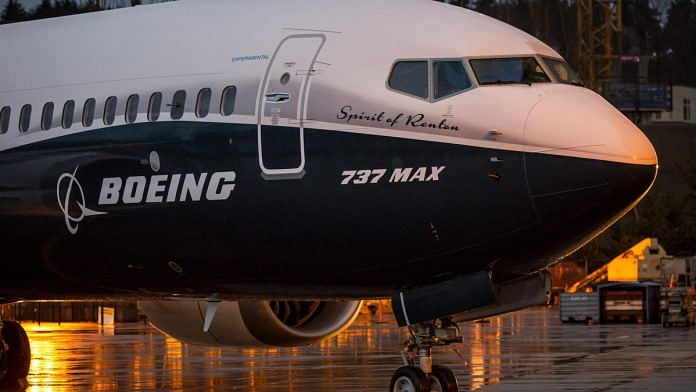Stick a pickle fork in Boeing Co.’s hopes of getting past its 737 drama anytime soon.
The Federal Aviation Administration has required urgent inspections of certain 737 Next Generation planes — the predecessor to the troubled 737 Max — after Boeing reported cracks in a part called the “pickle fork” on jets being overhauled in China. The pickle fork helps attach the wings to the fuselage, or the main body of the plane; crack inspections have focused first on the most heavily used NG planes. So far, 686 have been inspected, and 36 of them — or more than 5% — have signs of cracking, according to Boeing. That’s less than 1% of Boeing’s total 737 NG fleet, when you take into account newer jets with fewer miles on them that will be monitored over time. But the pickle fork is meant to last the lifetime of the plane, so whether it’s 5% or 1% of planes cracking, that’s too many.
This issue is easier and quicker to fix than the 737 Max’s software system. Boeing is setting up a repair station in Victorville, California, and expects the repairs to take two to three weeks per plane, a person familiar with the matter told Bloomberg News. And while modern planes are extraordinarily safe, they aren’t perfect; these snafus do happen, particularly with older, heavily used aircraft. They’re generally not a huge problem. What makes this different is the 737 Max, which remains grounded while Boeing works on a fix for a software system blamed for two fatal crashes. Every issue with a Boeing plane captures the public attention in ways that it didn’t used to. Rightly or wrongly, the idea that an aircraft part meant to keep the wings attached to the plane could have design gaps just adds to the perception that Boeing’s aircraft development process wasn’t as rigorous as it should have been.
The reason this matters is that eventually Boeing is going to have to convince the flying public to board the Max again. It’s a task made that much harder by the prevalence of social media and travel sites like Kayak.com, which added a filter in the wake of the second Max crash to allow travelers to exclude certain aircraft types from their searches. Boeing will have some more time to work out its marketing message: American Airlines Group Inc. this week said it doesn’t expect the Max to fly as part of its fleet until Jan. 15, abandoning hope that the jet would be back in service in time for the all-important holiday travel season.
The other question is what sort of airline market the 737 Max will face when it returns. The International Air Transport Association said Thursday that global passenger traffic grew 3.8% in August, better than July but a slowdown from the past few years. Meanwhile, Delta Air Lines Inc. warned on Thursday that its fourth-quarter profit will likely fall short of analysts’ expectations as it ramps up hiring to hold on to market share it’s gained from the Max fallout.
Delta doesn’t fly the Max, so it’s been able to pick up passengers from the likes of American Air Lines and Southwest Airlines Co., which do. The company has paid out record overtime to its pilots to help handle that spillover traffic, according to Reuters. CEO Ed Bastian told the Wall Street Journal he doesn’t want to keep squeezing his employees like that and will add more pilots, flight attendants and ground staff over the next year. This increased spending will collide with a weakening of airlines’ pricing power as the 737 Max’s return increases the supply of available seats, raising the question of how eager U.S. operators will be to add even more capacity over the coming years.
Getting the Max back in the air is Boeing’s most pressing task, but the plane will be flying in uncertain skies.
Also read: Inspections finds cracks on 5% of older Boeing 737 planes






